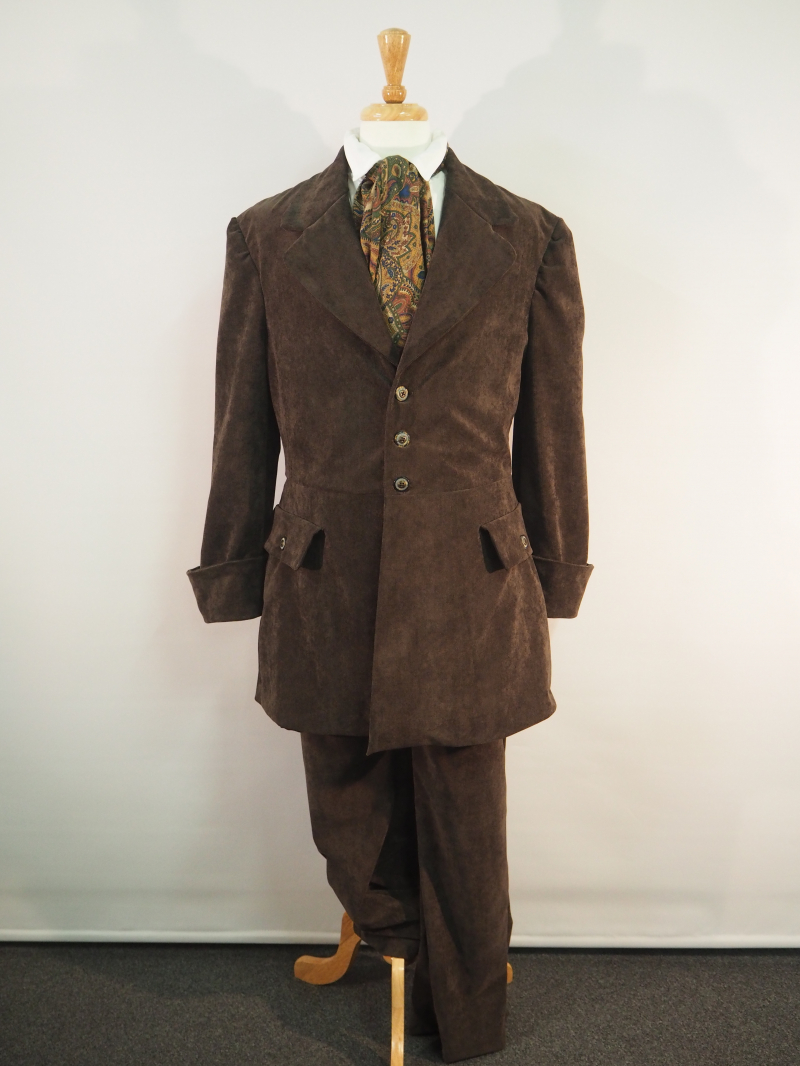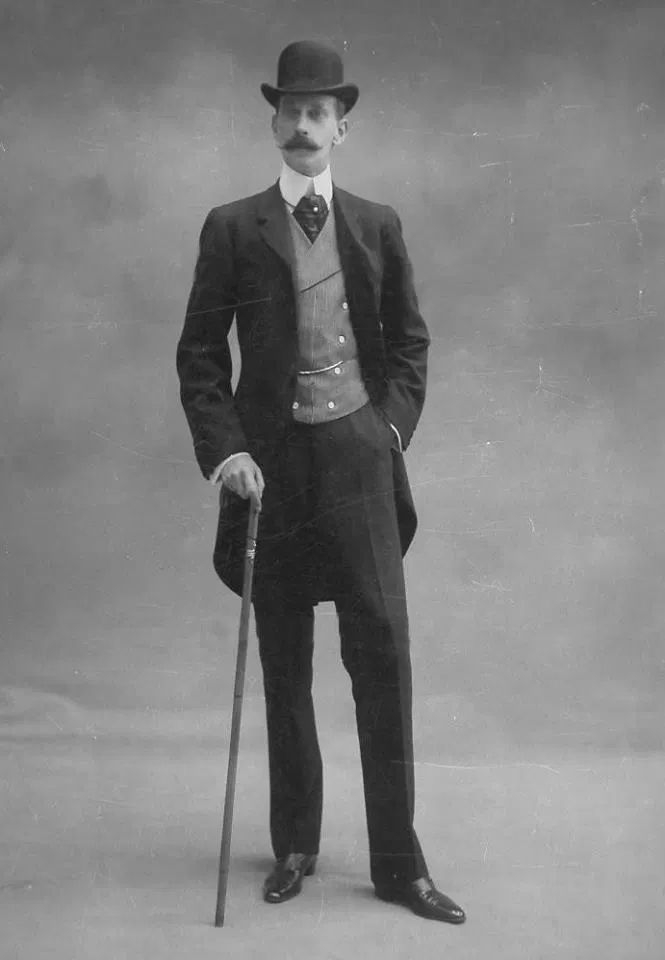Men’s Suit
Male attire style did not alter significantly compared to women's apparel. In the early years of the century, men wore stovepipe pants. Men were expected to dress professionally, subtly, and elegantly both at work and outside of it. Men on lower rungs of the economic ladder were able to purchase shirts as ready-to-wear clothing flourished. People bought half a dozen detachable collars and cuffs since these were the only parts of their shirts that could be seen by others and because it was difficult and sometimes chaotic to maintain laundering their shirts.
Shirts were often simple white and starched upon washing to give them a crisp appearance. Men preferred patterned shirts in addition to the traditional style. There were various different collars, ranging from high standard collars to wingtip and rounded banker collars. Men's trousers used to have tight-fitting fabric covering the legs, but over time, the trend shifted to a loose tubular form. By the turn of the century, straight pants with a front and rear crease became the norm. Men could wear them interchangeably every day because they were easily accessible and detachable. Early in the Victorian era, men wore rather understated yet colorful clothes. They typically dress in shades of brown, dark green, blue, violet, and black for evening events.












